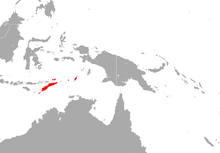
Emballonuridae is a family of microbats, many of which are referred to as sac-winged or sheath-tailed bats. They are widely distributed in tropical and subtropical regions around the world. The earliest fossil records are from the Eocene.

Isabelle's ghost bat is a bat species found in northwestern Brazil, Guyana, and Venezuela, and possibly Colombia.
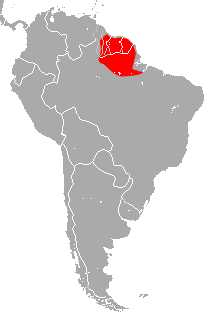
The Amazonian sac-winged bat is a bat species of the family Emballonuridae native to South America.
Aethalops is a genus of megabats in the family Pteropodidae. It contains two species:
The Angolan hairy bat also known as Angolan wing-gland bat is a species of bat in the Cistugidae family. It can be found in hot deserts in Angola, Namibia, and South Africa.

Allen's yellow bat is a species of vesper bat. There is some taxonomic debate surrounding this species, with some authors considering Baeodon a genus rather than a subgenus. It is endemic to Mexico.
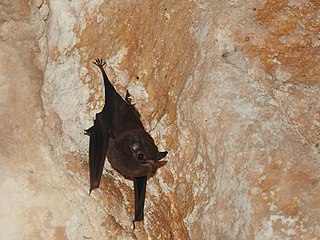
Thomas's sac-winged bat is a species of sac-winged bat in the family Emballonuridae. It is found in Belize, Guatemala, and Mexico.

Taphozous is a genus of the family Emballonuridae. The wide distribution of the genus includes several regions of Australia, Indonesia, Papua New Guinea and Africa. Taphozous comes from the Greek τάφος, meaning "a tomb". The common names for species include variants on sac-winged, sheathtail, or tomb bats.
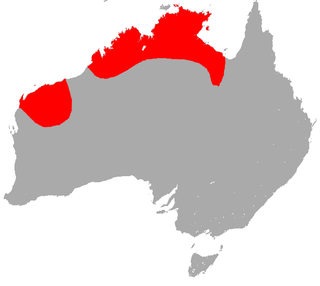
The common sheath-tailed bat, is a bat in the family Emballonuridae, occurring in northern Australia.

Hamilton's tomb bat is a species of sac-winged bat in the family Emballonuridae. It is found in Chad, Kenya, Somalia, South Sudan, Tanzania, and Uganda. Its natural habitat is savanna.

Hildegarde's tomb bat is a species of sac-winged bat in the family Emballonuridae. It is found near the coast in Kenya and Tanzania where it feeds in tropical dry forests and roosts in caves. It is a diurnal species and the International Union for Conservation of Nature has assessed its conservation status as "endangered". The specific name hildegardeae was given in honour of anthropologist Hildegarde Beatrice Hinde.

Hill's sheath-tailed bat is a bat of the family Emballonuridae. They are found in the deserts of central Australia.

The Arnhem sheath-tailed bat or Arnhem tomb bat is an emballonurid bat found at the Top End of Australia. The species is also referred to as the white-striped sheathtail for the distinguishing marks at the flank, a feature observable beneath the wing when the animal is in flight. Records of the species are rare.

The black-bearded tomb bat is a species of sac-winged bat found in South and South East Asia.

The Egyptian tomb bat is a species of sac-winged bat in the family Emballonuridae. It is a medium- to large-sized microbat with a mass of approximately 30 g (1.1 oz).
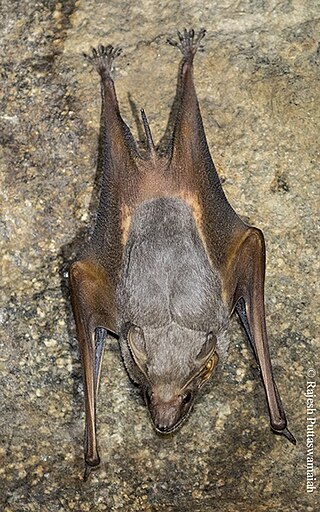
Theobald's tomb bat is a species of sac-winged bat in the family Emballonuridae. It is found in India, Indonesia, Myanmar, Thailand, and Vietnam.

Troughton's sheath-tailed bat is a species of sheathtail bat in the family Emballonuridae, found only in Australia.

Brooks's dyak fruit bat is a species of megabat in the family Pteropodidae endemic to Sumatra. It was formerly included as a subspecies of the dayak fruit bat. It is named for Cecil Joslin Brooks, who collected the type specimen near Bencoolen and presented it to Oldfield Thomas.

Thomas's fruit-eating bat, sometimes also popularly called Watson's fruit-eating bat, is a species of bat in the family Phyllostomidae. It is found from southern Mexico, through Central America to Colombia. Its South American range is to the west of the Andes. The species name is in honor of H. J. Watson, a plantation owner in western Panama who used to send specimens to the British Natural History Museum, where Oldfield Thomas would often describe them.

Thomas's big-eared brown bat is a species of vesper bat found in South America.
